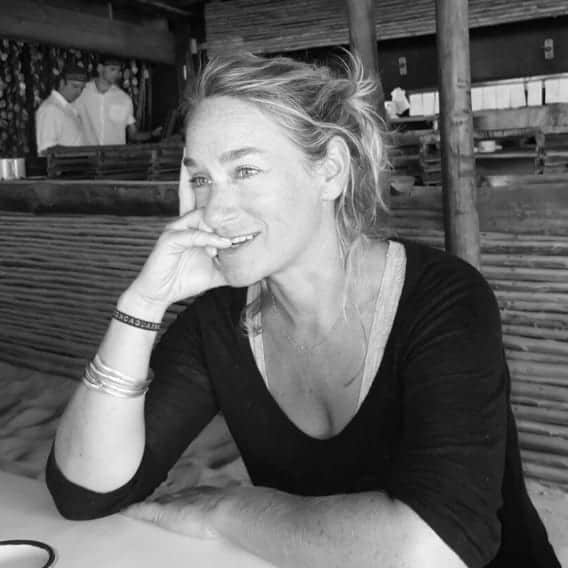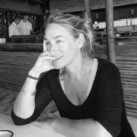
Penny Moon is the visionary behind A Quiet Place, a program dedicated to enhancing well-being in various environments, from workplaces to schools. A Quiet Place prides itself on understanding and involving clients, tailoring multi-sensory healing environments to meet the specific needs of schools, communities, and corporate organizations. By collaborating with staff and children to develop action plans and targets, the A Quiet Place Design Team crafts unique themes and color palettes for designated areas. The program’s success is ensured through three key roles: Champions, Facilitators, and Body Workers, each contributing to the effective and sustainable management of A Quiet Place. MysticMag finds out more.
What inspired you to develop A Quiet Place, and how did your background in teaching and psychotherapy influence its creation?
As a teacher in deprived areas and later in special education (focused on ASD and behavior-specific issues) within mainstream high schools, I witnessed many challenges faced by young people, often reflected in their classroom behaviors. These students were at high risk of exclusion, and the alternative education programs they might be referred to often had limited success. Therefore, I needed to develop something effective that required minimal time out of class.
My approach aimed for maximum learning with minimum disruption. Typically, therapy requires once-a-week sessions over two years to bring about change. One of the popular theories, ‘Attachment,’ often results in dependence issues even after learning to attach. We aimed to address these quality concerns.
Initially, I qualified in hypno-psychotherapy. As a single mom with two small boys, money was tight, but I met someone starting a school who allowed me to pay by providing desserts for the course. I became creative with these desserts and managed to attend in my 2CV car. I took various courses in counseling, NLP, massage, homeopathy, and nutrition, which complemented my yoga teacher training and practices in mindfulness and meditation.
In the 1980s, yoga was more traditional than today’s wellness spa variety. My teaching environment and the evident issues inspired me to find solutions for students with additional needs. After my training, I met extraordinary people and worked in hospitals and hospices, uncertain if my career would lean towards medicine or education.
As a yoga teacher, I explored self-knowledge aspects using astrology, guided by a palmist friend. I discovered the Electric Ephemeris and its intriguing patterns, revealing connections between me and my sons far beyond coincidence.
I have always had a touch of the psychic, inherited from my grandmother who read tea leaves. Learning these alternative perspectives felt like coming home. Despite respecting those dedicated to these arts, I realized I needed a stable job to support my family. However, I knew I could always fall back on my skills if necessary.
My work emphasizes interpretation and self-awareness, aiming to educate and guide individuals along their chosen paths. Through storytelling, I help them unlock their unconscious mind safely, fostering wisdom (gnowing) rather than mere knowledge.
Can you describe the unique multi-sensory healing environments you create and how they are tailored to meet the specific needs of different clients, such as schools, workplaces, and communities?
The environments I create are intentionally designed to foster a sense of quiet and safety. They have a hushed atmosphere reminiscent of a sacred space or a magical grove in an ancient forest. Children often start whispering when they enter. Unlike traditional multi-sensory rooms filled with flickering lights, these spaces are calm and consistent, allowing children to experience stillness—an unusual sensation for most of them.
These environments provide moments where typical barriers to learning can dissolve, letting children peek behind the curtain into the wonders of their creative imagination, inspired by my meditation practices. This is how you recognize an AQP room, with nature scenes bespoke to the local environment, chosen by the school. The room is slightly adapted to the age of the children and whether it needs to serve other purposes, which we try to discourage. If necessary, a large room can be divided with a beautiful, theme-relevant screen.
What are the key roles of A Quiet Place Champions, Facilitators, and Body Workers, and how do they contribute to the success of the programs?
Often, mental health programs are delivered by peripatetic therapists or counselors. This approach can be inefficient, so we use employed staff for continuity and local knowledge of families. These keyworkers deliver our programs under strict quality assurance, ensuring effective delivery in schools.
Champions are senior management team members, often the SENCO, who meet weekly with the Facilitators to monitor progress, build a team, and ensure the program is given the importance it deserves. They ensure Facilitators have dedicated time and are not diverted to other tasks. Champions are encouraged to take one child through the 6-week protocol to understand how it works, including weekly supervision.
Facilitators are recruited from existing staff to deliver one-to-one protocols, small groups, and Tier 1 classroom programs. They complete our year-long Diploma, which involves practical exercises and 13 written assignments (500 words each), plus a journal. In the second year, they receive three additional sessions on the themes of the Ocean, transformation, and journeys. In the third year, there is a session on conservation and animals. They complete these sessions with each other before delivering them to children. Facilitators’ personal development is integral to the program, and we provide ongoing training and weekly supervision.
Bodyworkers: Initially, we planned to hire external massage therapists for staff and peer massage programs. However, due to cost pressures, we trained existing facilitators in simple hand massage techniques and in delivering peer massage in class. This fulfills one of the three parts of the individual protocol program.
With A Quiet Place expanding nationally through franchising, what qualities and experiences are you looking for in potential partners to ensure they align with your ethos and philosophy?
AQP has been around for nearly 20 years and initially grew quickly after the first research was published. Unfortunately, we have shrunk due to a lack of funds and my skills as a businesswoman. As a teacher, I focused on sharing best practices, but shifting to a business approach through a charity, and later a small not-for-profit in 2005, coincided with education cutbacks and the closing of various funding streams. Additionally, when the innovative headteachers who supported AQP moved on, the program became vulnerable.
AQP’s influence often leads to a quiet and calm atmosphere in schools, which can be taken for granted. When people stop practicing the skills and techniques, they quickly revert to previous chaos and issues.
Now, many years later, we are looking for partners whose ethos aligns with ours and who might be interested in buying or partnering with us. There is significant business potential, especially as AQP is available as a franchising package. Our programs extend to families, early years, parents, domestic violence support, workplace wellbeing, and residential care for elders or special needs.
How does A Quiet Place integrate evidence-based practices with holistic approaches in its personal development programs, and what benefits have you observed from this combination?
As a holistic practitioner since the 80s, I knew that finding evidence to support my practices would be challenging. Traditional academic research often focuses on one or two aspects at a time, which can be limiting. Some academics I encountered even found the complexity of holistic approaches overwhelming.
I discovered a style called the “spiral action research paradigm,” which accommodates ongoing development. Originally applied in a GP waiting room, this approach involved small, incremental changes such as altering wall colors, adding plants, and incorporating music. It proved that holistic improvements were feasible.
Our first research was conducted for The Cheiron Project, a charity I founded. Cheiron, the teacher of healing and war on Mount Olympus, seemed a fitting symbol for our work. This research took place at the University of Liverpool’s Department of Education, which closed in 2005.
We received media attention from BBC News for our stress therapy programs for young children, and our group program, Theta, is adaptable to the needs of different schools.
New Programs:
- AQP Triage: This program offers an immediate in-house mental health service, addressing the long waiting lists (up to 6 years) for help in some areas. It provides assessment, diagnosis, and follow-up care.
- Cvnefin – AQP in the Community: This initiative extends our services to the broader community, emphasizing holistic health and well-being.
Our evidence, articles, and reports are available on the A Quiet Place website, showcasing the effectiveness and adaptability of our programs.
What challenges have you encountered in implementing A Quiet Place’s programs across different settings, such as schools and workplaces, and how have you overcome these challenges to ensure successful outcomes?
Innovation often clashes with the status quo, even when it’s designed to support and improve it. My journey in the early 90s was marked by this tension. Despite my hopes that research would offer evidence of progress, I discovered that many people were reluctant to engage with it. I was naively optimistic back then and faced various bizarre accusations, including being labeled a spiritual anarchist trying to convert Catholic children to Hinduism, a witch, and even someone selling exorcisms by post. These false accusations were distressing for the families I was supporting, forcing me to halt my efforts in some areas.
These challenges hindered my ability to form partnerships, but they also allowed me to develop creative solutions without conventional barriers. I’ve been fortunate to meet extraordinary people and have a deep trust in the divine. My personal yoga energy aligns with Kuan Yin, the goddess of compassion. This connection reflects my experiences in a Catholic boarding school, where I found solace in practices that combined mysticism and tradition.
I find spiritual renewal in pilgrimages and sacred land, balanced by the distractions of family life. This period of reflection reminds me of my blessings. My meditation book, Inner Landscapes, offers guided zodiac recordings and journaling prompts, allowing individuals to explore their spiritual journeys independently. My stories, such as The Space Between Breaths and White Bird, Scruffiest Angel, reflect my long journey and experiences.
In essence, any mundane place can become sacred with the right intention. Our actions can subtly transform our surroundings, reminding us that we are spirits on an adventure, expressing our souls through matter. That’s the cosmic joke we must remember.
If you would like to find out more about A Quiet Place, please visit https://www.aquietplace.co.uk/



